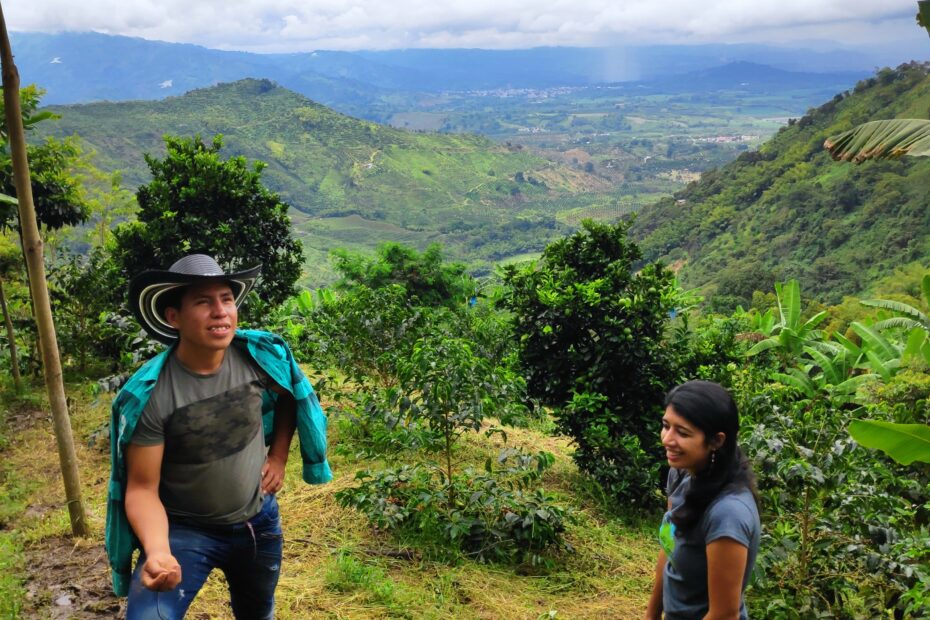FOR OVER 20 years, specialty coffee has placed great importance on establishing long-term direct trade relationships to address the price instability that producers often encounter.
At the same time, the industry’s focus on innovation has created an impetus for buyers and roasters to “chase” new coffees in search of variety and novelty – which inevitably means sourcing from a wider and more diverse range of partners.
At first glance, these two central tenets of specialty coffee seem completely incompatible.
“The opposite is true,” says David Griswold, founder of Sustainable Harvest Coffee Importers and creator of the Relationship Coffee Model. “You need a coffee partnership based on a solid business relationship to enable the conditions for innovation.”
He believes that there is an opportunity, rather than a contradiction, to be discovered within specialty coffee’s pursuit of “relationship coffee” and its relentless drive for innovation.
The original idea behind “relationship coffee” in the 1990s aimed to establish an alternative green coffee trading model, David explains. He says this was rooted in business empathy and collaboration among coffee buyers, sellers, and other value chain actors.
“The model was a way to create long-term, mutually beneficial relationships between producers and roasters built on trust and transparency,” he says. “It required both parties to come to the negotiation table, willing to have honest conversations to solve the supply chain challenges they faced. This wasn’t the norm at all 30 years ago.”
Building long-term relationships with coffee producers can encourage farm-level experimentation, making it easier to manage the risks associated with innovation. When producers are assured of a roaster’s commitment to purchasing certain coffee lots each year, they have more capacity to experiment with new farming practices and processing techniques, and invest in new machinery.
“For me, ‘relationship-based buying’ is anything but an obstacle to innovation,” says David. “Collaboration creates the necessary conditions for innovation. Taking a chance on a new idea alone is a scary prospect. A multi-year, direct, and transparent business relationship accelerates growth for both parties.”
However, the proportion of specialty coffee transactions occurring within these trusted relationships is still relatively small. The farmers who operate outside of such relationships are left alone to constantly adapt and innovate – and that’s when it becomes risky.
Innovation can be difficult for some coffee farmers.
Innovation at farm level
Today, many coffee farmers face a raft of socioeconomic challenges: specialty coffee production costs can sometimes surpass prices, which is often compounded by climate change adaptation, labor shortages, higher fuel and fertilizer costs, increasing interest rates, devalued currencies, and much more.
“These are not conditions that incentivize producer investment in innovation,” says David.
Coffee producers struggle to adapt to evolving market demands. Whether it’s investing in new varieties or fermentation techniques, or securing certifications, the cost of adaptation is high.
“For a while it was Gesha, but now the new hot topic is Regenerative Organic Certified (ROC) coffee,” says Grayson Caldwell, head of sustainability at Bellwether Coffee. “New coffee trends take time, investment and resources for farmers to catch up with – often 3-5 years – and it’s pretty one-sided.”
A common response is that buyers seek out producer groups that can meet the latest trend, rather than working with existing partners to meet market demand and build a more stable relationship.
It’s also important to understand how wealth disparity affects a producer’s capacity to innovate. Producers with greater resources are often better equipped to adopt new innovations at a faster pace.
“Brazil can adopt new machinery a lot more easily than a smallholder farmer in Guatemala,” says Grayson. “We need to factor this in or we could end up with a lack of diversity in coffees, and some really unfair market dynamics.”
Ultimately, what most coffee farmers need is some level of certainty – that is what makes innovation possible.
“Producers don’t want to face the burden of risk alone,” says Griswold. “We need to think about how we (buyers) are creating the enabling conditions for farmers to pursue innovative ideas. Willingness to take risks is the key to innovation.”
Rethinking innovation
To drive innovation in a sustainable way, it may be necessary to reconsider the term itself. “Innovation” is typically driven by the end consumer – from digital ordering experiences to new processing methods and exotic flavors. In simple terms, it is something primarily considered in relation to the customer, aimed at triggering a market response.
However, if innovation could be positioned as a way to improve well-being across the sector (rather than a market response), its impacts could be far broader.
“Innovation could [drive] a new pricing methodology that goes against how the industry has priced coffee since the beginning,” says Grayson. “Stepping away from the C market and prioritizing farmers’ livelihood needs is the way forward. Price equity and consumer consciousness is a really unique way to redefine innovation.”
Whether the industry re-thinks its idea of innovation or not, relationship-based purchasing can certainly provide the stability needed to enable it.
However, the reality is that not every farmer operates in such a collaborative space. The real challenge is the pressure that innovation in some parts of the market exerts on the rest of the industry. For producers who lack the financial support of a roaster committed to purchasing their lots, a cautious approach is necessary.
Ultimately, it’s all well and good to push for innovation on farms that are thriving, but the specialty coffee industry must remember that not every farmer is in the same boat. Many lack the capacity to absorb the costs of failed experiments – meaning a push for innovation across the board could be irresponsible without the right caveats.
Credits: Coffee Intelligence


